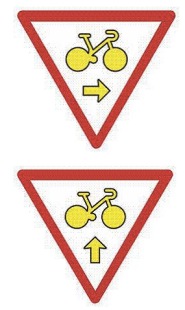
on bikes that they can roll through
certain intersections under certain
conditions.
If you only read the media accounts, you’d think that officials in the French capitol of Paris have just given people on bicycles a free pass to wantonly roll through red lights with reckless abandon.
The Oregonian’s website reads,
“Hey, Portland bicyclists, want to run red lights? Move to France. Seriously. It’s legal there now.”
Saying that the new law comes only after, “a fierce three-year campaign by cyclists’ associations,” the UK-based Telegraph writes:
“Paris cyclists given right to break traffic laws: Breaking traffic rules, almost a national sport in France, has just been legalised – but only for Parisian cyclists.”
But beyond the sensational headlines, the new law in Paris makes a lot of sense.
A local citizen activist sent me a translation of the ordinance by a French-speaking friend. The friend looked into the details and here’s what she found (emphasis mine):
“While the French press is reporting that cyclists can now run red lights, the details are far less salacious. At intersections that have the special signs specific to this regulation, cyclists can turn right at red lights. At T-intersections, where there is no road to the right, cyclists will be allowed to go straight through the light. Cyclists must yield to pedestrians, and can not go through intersections when people are crossing the road. Right now the city is testing out the policy at a few intersections. If it is successful, they will expand it to intersections in 30 km per hour zones. I don’t think they have installed any of the signs yet, but they are going to be posted in 15 intersections in the 10th arrondissement.”
If you read French, here’s a news story with more information.
I would love to see Oregon revisit the “Idaho Stop law”. In 2009, a similar law struggled in the legislature. Biased media coverage in The Oregonian (published the same day the bill got its first big hearing in Salem) wasn’t solely to blame for the bill’s failure, but it didn’t help.
I especially like the T-intersection provision. There are places in Portland — like on SW Naito — where allowing bikes to continue through T-intersections would improve efficiency at no cost to safety.
It’s clear that most laws governing how vehicles handle intersections were written solely for automobiles and it’s long overdue that our laws begin to reflect the vast differences between bicycles and automobiles. It’s unfortunate that bias against bicycling tends to dominate efforts to do just that.
— For more background on Oregon’s effort to pass a similar law in 2009, read our “Idaho Stop Law” archives.

